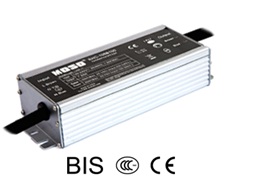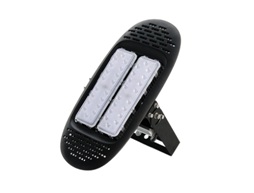The US Food and Drug Administration (FDA) pointed out: In the medical device industry, home health care is the fastest growing field. Driven by the prolonged life expectancy of human beings, the increasing number of patients with chronic diseases and the increasing cost of health care, more and more “smart†and “friendly†medical devices are entering the household consumer market. These healthcare products include: blood glucose meters, digital sphygmomanometers, blood gas analyzers, digital pulse and heart rate monitors, digital thermometers, pregnancy testers, transdermal drug delivery systems, dialysis systems, and oxygen concentrators. Many of these instruments can be wirelessly connected to the office of the medical staff through the Internet to achieve continuous online monitoring and diagnosis of critical patients. As the technology used in medical electronic products is becoming more and more complex, in order to ensure that everyone including medical personnel, patients themselves and the most important home users can use these products safely and effectively, the design requirements for these products are becoming more and more High, and many of these requirements may conflict. For designers, all this means realizing more functions on a chip or circuit board in a given space while reducing power as low as possible. "When choosing an IC for home health electronics, the biggest problem facing designers is how to balance various aspects reasonably, such as small size, low power, low cost, high reliability, long life and high safety. "Steve Kennelly, senior manager of Microchip ’s Medical Electronics Division, explained," How much processing power is required depends on who is the user of the medical electronic device. " The production volume of many medical electronic devices is not very large, so it is difficult to achieve lower market costs through automated manufacturing processes. Of course, a positive sign is that the prices of individual electronic devices (sensors, MCUs, displays, memories, etc.) in these products are falling. Another obstacle faced by medical electronic equipment is how to achieve tightness much higher than that required by non-medical electronic equipment, and the overall miniaturization makes the tightness more difficult to achieve. Understand the requirements of home medical electronic equipment For doctors and other professionals to operate medical electronic equipment is handy, because they have trained the use of these instruments. For family patients, simple operation is extremely important. Fortunately, the latest highly integrated chips, complex DSPs and microcontrollers, high-density flash memory, and advanced micro-electromechanical systems (MEMS) sensors all contribute to this goal. "We welcome these seemingly contradictory requirements because they provide us with opportunities for innovation." Todd Schneider, vice president of the medical business unit of AMI Semiconductor, said that many of the company's medical electronic designs use dedicated standard products (ASSP) and Application Specific Integrated Circuit (ASIC), "We have been in the medical electronics industry for more than 20 years, so we understand the technical challenges facing these devices." Depending on the specific practical application, the performance priority setting of each healthcare electronic product will be different. For example, for products such as portable blood glucose meters (often using disposable chemical test strips), low cost is the highest priority parameter. The portable home dialysis system must make reliability and long life as the top priority in the design, and the cost is second. Implantable devices such as pacemakers must have high reliability, small size and long life, and power consumption should be as small as possible. Cost is not a major consideration in this case. Size is very important Because people put forward many performance requirements for medical electronic products, engineers have to face various design trade-offs. This means that they need to weigh carefully when deciding what type of sensors, analog-to-digital converters, amplification and filtering, control and data processing, power supplies, displays, and wireless transceiver circuits. Size is usually the main design constraint, especially for medical implantable electronic products, minimal tissue penetration is absolutely necessary. Such implant products generally include a sensor, some signal processing circuits or a transmitter. All these devices need to be inserted into a miniature catheter or probe and then inserted into human tissue. The small size also makes it easier for doctors or medical personnel to place implanted products into a person's body. For example, some smart pills containing sensors, cameras, and RF transmitters can be used to clearly and non-invasively observe the internal organs of the body. DexCon's implantable blood glucose monitor uses the ultra-low power ASIC system-on-chip provided by AMI Semiconductor. It continuously monitors the condition of diabetic patients through the RF transmission function in the 402-405MHz frequency range. Disposable blood glucose meters will also become smaller and smaller, and the current typical size is as large as a handheld personal digital assistant (PDA). Some blood glucose meters are even as large as small watches, but they still contain sensors, microcontrollers, liquid crystal displays (LCDs) and batteries. These instruments usually use optical or electrochemical sensors to measure blood glucose values. The patient only needs to pierce his finger to drop a drop of blood on the disposable test strip, and the blood glucose meter can read the blood glucose value. One-time use of machines and test strips must also be designed for low cost. The Holter monitor of wireless electrocardiogram (ECG) is a good example of miniaturization. The monitor designed using ADI's existing IC is very small and can be installed on the back of the ECG electrode. With lower noise and greatly reduced interference signals, this monitor can provide a more accurate signal than traditional designs. Reduce power consumption Lower power consumption is the dream goal of medical products, especially battery-powered and portable household equipment. In simple terms, reduced power means longer battery life. It also allows designers to flexibly use smaller batteries and give full play to the advantages of the latest MCU chips with power management performance. However, low power consumption is not always associated with smaller battery sizes. When computing power is required, like a cochlear implantable hearing device, the battery may be larger than the circuit. Cochlear implantable devices must work in dynamic mode, and static 'sleep' mode is difficult to use. The power supply for these implanted products generally comes from an inductive power supply worn outside the ear. These products must use a fast clock rate and operate continuously with a wide dynamic range, so they consume a lot of power. Another issue affecting power consumption is the IC manufacturing process. ICs manufactured with a 0.13 μm process have greater leakage current and static power consumption than previous generation ICs manufactured with a wider wire diameter. "In the manufacturing process, we optimize the chemical composition of IC wafers to reduce power consumption." Todd Schneider of AMI Semiconductor said. Reducing the operating voltage of the IC and carefully managing the capacitance effect are of great help in reducing leakage current. This is why medical electronic system manufacturers use (in three-dimensional packaging) chip stacking instead of squeezing each device to occupy board area on a plane of limited size.
MOSO Fixed Output LED Driver is a type of compact size, IP67, high quality
LED driver with cost efficiency working in constant current mode. This control
gear is designed for industrial LED light fixtures, like linear or round high
bay, low bay lights, or flood lights, canopy lights in industrial area, or
factories, warehouses.
This Fixed Output LED Driver got global safety certifications, including
UL, CE, TUV, CB, ENEC, SAA, BIS, etc. The LED control gear has universal input
voltage, from 90~305Vac. It is a reliable product compatible with various
application and different countries.
Due to the high IP rating, the LED power supply can be used for dry, damp,
wet locations. It is suitable for built-in a luminaire body, or it can be
installed outside of the fixture. The perfect cooling design can ensure
the product reliability and long lifetime for at least 50,000hours operation at
least) minimum. Drivers with dimming 0~10V & PWM is available.
MOSO grants the product with 5 years global warranty. Customer can refer to
Warranty Policy, find the closest MOSO distributors or sales representatives,
to get a local replacement in case of any failure.
Fixed Output LED Driver Fixed Output LED Driver,Current Fixed Fixed Output LED Driver,Independent Fixed Output LED Driver,Output LED Driver Moso Electronics , https://www.mosoleddriver.com

